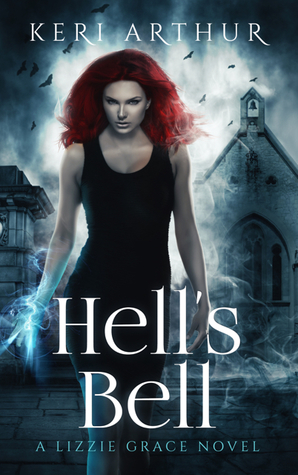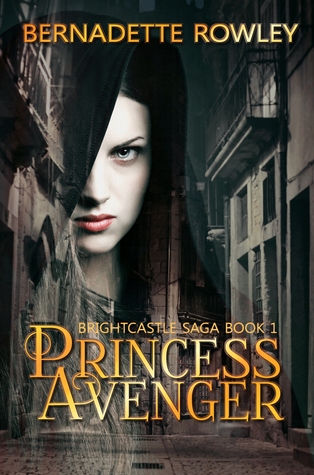Today's Darklight on is ... Kim Cleary
Welcome, Kim
Let me preface this by saying I wasn't chasing any accolades. Definitely not that of a USA Today bestseller, when I applied to be included in an urban fantasy box set.
I saw the box set advertised in a writing group that I'm a member of. At the time, I was halfway through a standalone novella in my Daughter of Ravenswood series. The box set looked like a perfect match as its theme was kick-ass heroines in an urban fantasy story.
I'd noticed that quite a few of my writing friends had participated in box sets with varying results. All benefited from exposure to a brand-new set of readers as all the author participants shared their newsletter lists during the pre-order period and launch week. I liked the idea of collaboration with a bunch of other authors in my genre, as well as gaining the visibility. It's the hardest thing to achieve in this game!
So, I applied for inclusion, and was accepted. Along with twenty-one other urban fantasy authors, many of them multiple bestsellers and award winners!
Every box set has a buy-in price. They can range from $50 upwards, and the money is spent on covers, blurbs, and of course oodles of advertising. Obviously the bigger the buy in, the more you expect back. This one ended up with a buy in price of $500. Yes. A considerable sum of money.
However, it offered me several benefits:
- a big marketing learning curve,
- collaboration with the other participants,
- the increased visibility I was looking for,
- and after a few weeks discussion, a decision to try to make enough sales to hit the USA Today bestseller list.
Funnily enough, I was quite blasé about that decision. It didn't seem particularly relevant to me. Things changed over time… But we will get to that later.
The steps to sell enough copies to hit the USA Today bestseller list
Disclaimer: This is the only box set I've been in, so I only have the one experience to base my feelings on. The rest of this post is a quick summary of what I learned in this exercise. (I'm going to pretty much ignore the impact of Pronoun closing, as it created several abnormal issues)
The activity fell into roughly 3 periods:
- Writing and editing
- Pre-order promotion
- Launch week
Writing and Editing Phase
As our professionalism had been assessed prior to inclusion, we were each accountable for our own writing and editing. (This is normal for a box set and means if you are considering doing this you need to allow for the cost of editing in addition to the buy-in price) I had to finish my story, get a cover organised, and get through two rounds of editing.
Luckily, we had an experienced publisher and a few experienced participants. So, during this phase we also did a lot of work on setting up a Google Drive of shared documents, organising rafflecopter and other promotions and preparing advertising materials. (A few people in the group were fabulous at creating images and writing tags/blurbs but we all contributed in various ways)
This is probably the phase in which I learned the most. Particularly around setting up great giveaways, running effective Facebook parties, and writing great ad copy.
Because we were targeting to hit a list rather than make long-term sales we had a six-month pre-order period and concentrated our ad spending on getting those pre-orders.
Pre-order Promotion
 While the ad spend was widespread, $wise we focused on Bookbub, Facebook and AMS. The publisher took care of this, we the authors concentrated on our own newsletters, getting newsletter swaps, promoting in relevant Facebook groups and promoting the giveaways everywhere. We also ran an author incentive to find extra authors to do newsletter swaps with.
While the ad spend was widespread, $wise we focused on Bookbub, Facebook and AMS. The publisher took care of this, we the authors concentrated on our own newsletters, getting newsletter swaps, promoting in relevant Facebook groups and promoting the giveaways everywhere. We also ran an author incentive to find extra authors to do newsletter swaps with. Yes. A huge amount of work. In fact, it was a real eye-opener for me, on just how much work (and how much money) is required to get sales.
A few points became very clear:
- An engaged newsletter list is critical. Small and engaged is better than large, where half the list doesn't even open your emails.
- Good collaboration with authors in the same genre is critical.
- Readers respond to attractively packaged giveaways.
- By far most sales are on Amazon. But to get onto the list, you must achieve at least five hundred sales on each of three platforms. (usually Amazon, Nook and iTunes) You must pay attention to getting sales on Nook and iTunes, both of which require significantly more work than Amazon, to find readers and get traction with advertising and giveaways
Launch week
Launch week for us came almost 2 months earlier than we had planned, thanks to the closure of Pronoun. As you can imagine this created a huge amount of stress. Both for authors who were still completing their stories, and for all of us who thought we had another two months of promotion. Let's ignore all that extra stress… The main complication was that the closure of Pronoun affected a lot of box-sets and single releases. It meant that all the affected authors would be releasing in the same week.
Normally you would expect to get onto the USA Today bestselling list with sales of 5000 in your launch week. (Three to four times this number to get onto the New York Times list, but that one isn't based just on sales) With all the extra release activity, we had no idea how many we would need, but 5000 probably wasn't going to cut it.
We really had to fight to get the 500 sales on iTunes, luckily, we had a couple of people familiar with the platform and with the groups of readers most responsive to advertising. If not for their efforts we would not have reached the number of sales required.
 We had seven days to sell, sell, sell. We all promoted on our own Facebook pages, tweeted like crazy, promoted in Facebook groups and made sure our organised newsletter swaps went smoothly. Some of this activity also costs money – small amounts for boosting a post, hosting a giveaway, providing Amazon gift cards and/or copies of e-books, that sort of thing. Anyone considering joining a box set to hit a list needs to be prepared to spend over the cost of the buy-in.
We had seven days to sell, sell, sell. We all promoted on our own Facebook pages, tweeted like crazy, promoted in Facebook groups and made sure our organised newsletter swaps went smoothly. Some of this activity also costs money – small amounts for boosting a post, hosting a giveaway, providing Amazon gift cards and/or copies of e-books, that sort of thing. Anyone considering joining a box set to hit a list needs to be prepared to spend over the cost of the buy-in. By the end of the week, I wanted that accolade! I was a total nervous Nelly waiting for the numbers to come out.
USA Today Bestselling Author
We did it!
On final count, we sold a little under 7000 box sets, only slightly over 500 on each of Nook and iTunes – no matter, it was enough to get counted.
I hadn't started out chasing any accolades, and definitely not that of a USA Today bestseller. But the numbers came through: we had achieved 119 in the bestseller list for that week! I danced around the house with a grin that made my face ache.
Was it worth it?
Huge amount of effort.
Considerable cost.
Will get some return on investment. (But not 100% as we didn't set up to keep our ranking high and keep sales sticky)
Do readers care and purchase books with the accolade rather than someone else's? It's debatable isn't it. It's just another tool, another talking point in your armoury.
It does look fabulous on your covers though!
I'd love to hear your experiences and your thoughts!
This post was written for and appeared first in Darklight On. The blog of Darkside Downunder, a group of writers from Australia and New Zealand who write speculative fiction with romantic elements.
This post was written for and appeared first in Darklight On. The blog of Darkside Downunder, a group of writers from Australia and New Zealand who write speculative fiction with romantic elements.
About the Author:
Kim writes paranormal stories with a intrigue, suspense and a hint of romance.
She loves all animals, especially her dogs; and thrives on coffee and chocolate
while writing and researching.




















































